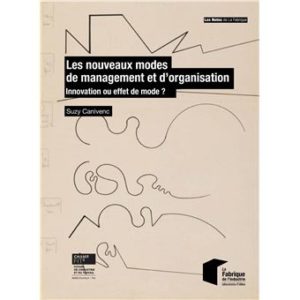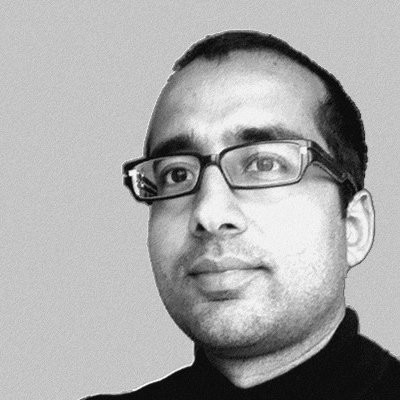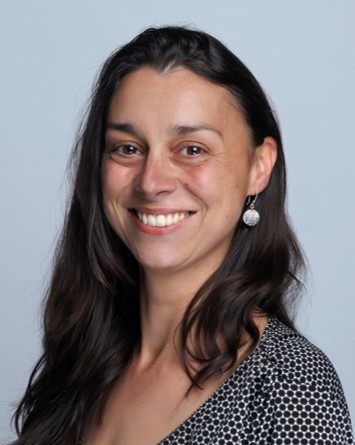As part of the release of our book regarding the Rendanheyi management model, Et si on copiait les entreprises chinoises ? (available on Amazon, in French), we had the pleasure of interviewing Suzy Canivenc, a renowned French researcher in the field of communication and organizational transformation. We wanted to understand what differentiates a truly innovative management model like rendanheyi from a mere fad.
Youssouf Chotia: Hello Suzy Canivenc, you wrote Les nouveaux modes de management et d’organisation – Innovation ou effet de mode ? (New management and organization models – Innovation or fad?) Why did you write this book?
Suzy Canivenc: Over the past few years, we’ve been hearing a lot about liberated companies, and other models that are part of the same nebula, such as holacracy or opal organizations (which refer to Frédéric Laloux’s book Reinventing organizations). The aim of my book was to give historical, theoretical and empirical depth to these debates, which seem to forget that the search for more horizontal forms of organization and more participative management is not new. Indeed, research and experimentation in this field has been going on for over a century. I wanted to remedy this prevailing amnesia, to enable us to finally capitalize on all this work and experience.
We can draw inspiration from a model, but only if we tinker with it and reformulate it according to feedback.
Thomas Coutrot
Youssouf Chotia: What extract from your book best represents your convictions?
Suzy Canivenc: I’d like to quote a sentence from the preface to my book, which Thomas Coutrot, former economist at DARES (French government’s Department of Research, Studies and Statistics), now working at IRES (Institute of Economic and Social Research), did me the honor of writing. In his preface, he condenses the key elements of my book, notably in this sentence which precisely establishes the difference between a mere managerial fad and a genuine organizational innovation: “We can therefore draw inspiration from a model, but only if we tinker with it and reformulate it in line with feedback. In this back-and-forth between theory and experience, it’s essential to take real work into account, and this can only be done by listening carefully to employees”.
Youssouf Chotia: In chapter 3 of your book, you make a distinction between what’s innovative and what’s fashionable, since certain practices can be totally misguided and far more harmful than a traditional approach. Don’t managers realize that employees are not fooled by these practices, and are quick to detect whether they are genuine?
Suzy Canivenc: Most managers who experiment with new management and organizational methods are genuine in their approach: they don’t necessarily do it to manipulate employees and consciously impose a game of deception on them. Over and above the authenticity of their intentions, which can always be questioned, the problem lies above all in their understanding of “real work”, as Thomas Coutrot rightly points out. And this is where the problem usually lies, when new management methods are introduced. These new models need to take psycho-sociological variables into account, and not just managerial aspects. In fact, they profoundly challenge the professional identities of everyone involved, particularly managers, and the interpersonal relationships between employees.

by Suzy Canivenc
The fact remains that in France, hierarchy is deeply rooted in our culture (a country where the king’s head was cut off… to be replaced by an emperor).
Youssouf Chotia: From my point of view, the general change in the way an entire organization functions, such as that implemented by Haier with its rendanheyi model, goes far beyond the simple presence of “autonomous” teams within a classic hierarchical organization.
For example, a software company may well operate with a classic system and project teams following agile principles. But few companies like Haier go so far as to give their autonomous teams complete freedom to hire, compensate, address the market in their own way, and so on.
By comparison, don’t French companies offer “very limited autonomy”?
Suzy Canivenc: This is indeed often the case, particularly in large organizations where alternative practices (agile methods, holacratic circles, lean problem identification and resolution practices) are embedded in pyramidal organizational systems which, for their part, remain based on traditional hierarchical and bureaucratic practices. Autonomy is then limited to the micro-level of work organization, leaving traditional governance intact at the meso- and macro-levels. It is often in small and medium-sized companies that delegation and subsidiarity practices are taken furthest. Much depends on the will of the leader, and it’s not the least of the paradoxes that the “liberation” of companies often comes from the highest hierarchical figure.
The fact remains that, in France, hierarchy is deeply rooted in our culture (a country where the king’s head was cut off… and replaced by an emperor).
Youssouf Chotia: In our changing relationship to work, you mention the excellent The Hacker Ethic (Himanen, 2001), which comes 100 years after Weber’s Protestant Ethic. Are there fundamental differences between generations? How should companies address these expectations?
Suzy Canivenc: As I explain in my book, we’re not so much dealing with a generational phenomenon (with the famous Generation Z) as with an age group phenomenon: the 18-24 year-olds, who are entering the job market and have profound expectations of work and the company. At the end of the day, these expectations are the same as those of many employees since the 60s and 70s: respect, fairness, collaboration, the chance to develop skills and potential while feeling useful to others, and so on. There is no profound difference between X, Y and Z in this respect; it’s just that the Zs shout it louder, as the others seem to have resigned themselves to the fact that the company is evolving little or very slowly.
There is also an effect of the times, where the health crisis and the ecological crisis both feed a “quest for meaning”, which again is not limited to the new generation.
So it’s not a question of differentiating management between age groups within the same company, but of developing management that is both more flexible and more personalized. Indeed, employees do not necessarily have the same expectations at different stages of their lives, or depending on their life paths. In terms of HRM in particular, we need to move from egalitarian but massive practices (everyone is treated in the same way) to more personalized but fair practices, while preserving group cohesion. A real balancing act!
New technologies have no inherent magic organizational power
Youssouf Chotia: In my opinion, technology and digital technology are never the determining factors in new forms of organization. How can we overcome our “techno-solutionism”?
Suzy Canivenc: I couldn’t agree more. That’s the whole point of my next book (co-written with Marie-Laure Cahier), due out next autumn, which looks at new collaborative tools, the use of which has intensified with the health crisis and the development of telecommuting. It’s important to understand that new technologies have no intrinsic organizational magic. Setting up a corporate social network or collaborative platform is not enough to make organizations more horizontal, work practices more collaborative and activities more fluid. The “effects” of technologies always depend on the way in which individuals use them “in situation”: the organizational context in which these tools are deployed plays a fundamental role here.
Youssouf Chotia: At Haier, following the introduction of customer-facing micro-companies, there has been a real rethinking of the company’s boundaries. In particular, this involved the notion of the Ecosystem of Micro-Communities (EMC) and the transformation of support functions into platforms (logistics, HR, finance) whose customers and suppliers may be external to Haier.
Have you identified this type of thinking in the companies you’ve studied?
Suzy Canivenc: Some of the companies we studied are indeed seeking to deploy a wider ecosystem through a multiform network. Articulating the various members of the network is, however, a challenging exercise: the balance is often difficult to strike between the autonomy granted to each entity in the network and the interdependence that needs to be preserved in order to continue to form a coherent “whole”.
Youssouf Chotia: Thank you, Suzy Canivenc.
Suzy Canivenc holds a PhD in Information and Communication Sciences ( with a specialization in organizational communication). Her work focuses on socio-organizational innovations in companies, particularly in self-managed cooperatives and digital organizations.

Educated in management at IAE in Paris (Sorbonne Business School), Youssouf Chotia spent ten years in management and organization consulting, notably at Devoteam and Weave. After these experiences, he continued his career by joining Thalès in the space sector.
He remains convinced that the search for profit is compatible with individual and collective fulfillment, as long as one is interested in managerial innovations.

